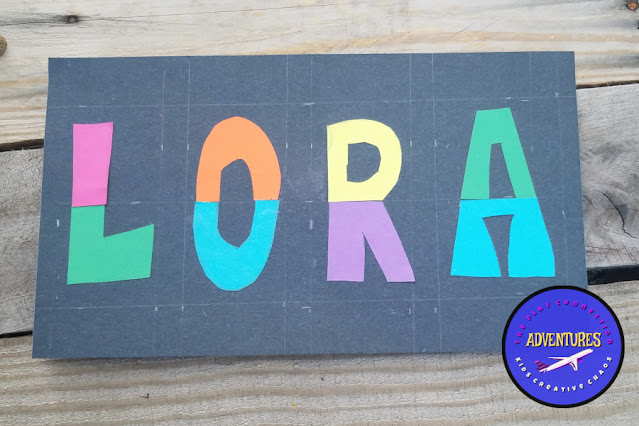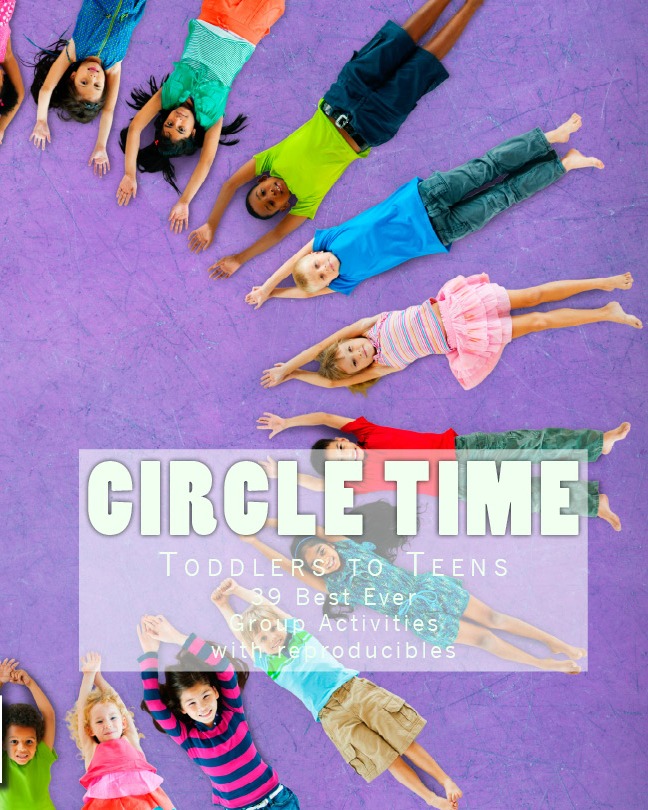How to Paint Like Henri Matisse
Paint Like Matisse
MATISSE ABSTRACT ART LESSON PLAN
Painting with Scissors and Paper Cut Outs: How to Paint Like Henri Matisse
COLOR THEORY COLOR SCHEME CUT PAPER LETTERS ART PROJECT
LEGEND Color Theory Letter Project
What are the Color Schemes?
How to Make Block Color Scheme LEGEND Letters with Bright Colored Paper
Foolproof ways to tire your toddlers out for nap time
Are you struggling to get your little toddler to take a breather and rest? Nap time can be heaven for both you and your toddler. They get some much-needed rest before carrying on with their day, giving you a chance to get a few things done, or simply take a minute for yourself. You've probably wondered, how to get your baby to sleep for a nap, here are some tips to earn that well deserved quiet time.
While nap time sounds like a dream, getting your toddler down and asleep is much easier said than done. Although some days may not run to plan, there are some great ways to encourage a toddler to take his nap, so you can have a moment to get through your to-do list. Here are some infant nap time parenting tips so you can get some things done around the house.
Encourage or play active games with them
Active games are a great way to burn off all that extra energy before a nap. It can be as simple as a game of Simon Says or Head, Shoulders, Knees and Toes. Not only are these games fun and easy, but they also require minimal set-up and clean up.
Simon Says can help kids learn about body awareness and movement, as well as how to pay attention, follow instructions and be a leader. Whereas Heads, Shoulders, Knees and Toes can help kids with their balance, coordination and learning about their bodies.
Other games like Duck Duck Goose and Ring Around the Rosie lets kids literally run around, but can also help them develop strategic thinking skills and spatial awareness – although you’ll need more than one child (or adult!) to be able to play them.
Get some fresh air and/or exercise
This goes without saying – exercise is a great way to tire your little ones. Ideally, any exercise you choose to do should burn through their excess energy without giving them a second wind and keeping them wide awake. The key is to stay active and keep babies moving, but not to have too much fun so they won't fight sleep when it comes.
The old stand by activities are great for tiring out your baby for outside play:
Bouncing or kicking a ball.
Riding a bike or scooter.
Playing chase.
Blowing bubbles.
You can even go for a light walk around the block or to their favorite playground. Let them loose on the play equipment and they’ll be ready to nap when they get home.
If the weather isn’t the best, you can still get your toddler moving at home. Encourage them to have a dance along to a music video or get them running and climbing with a make-shift obstacle course.
Put them to work with some household chores
If you’ve got a few jobs to get done around the house, why not get your toddler involved? This will take a little patience, the job will likely take a little longer, but every little chore will get your toddler closer to sleep.
The easiest way to make this nap time trick work is by giving your kids chores that are appropriate for their age, which also keep them active. Start with simple things like picking up their toys or tidying up their room. You can add a touch of fun to the household chores by having clean-up races, enjoying a toy scavenger hunt to be found in the bottom of the laundry pile, or making a game of loading the dishwasher.
Not only will doing household chores wear your kids out, it also teaches them responsibility about how a household functions. These are valuable life skills your children will carry with them throughout their lives. It’ll also help you get through the household chores on your to-do list, even if they’re not perfectly done!
Encourage winding down activities
Even with all their energy burnt off, your little one might not just drop straight off to bed. Sometimes they need a little quiet time to help them settle and wind down.
Relaxing activities that will keep their attention are key to quiet time. These activities can be as easy as giving them an age-appropriate puzzle, a simple coloring activity, or engaging them in quiet building activities, like a Lego set.
When all else fails, a good-old children’s book is a sure-fire way to help them unwind. You can encourage them to curl up on the couch and read to themselves or mimic bedtime and read to them as they fall asleep.
Create a nap time ritual
Complement winding down activities by creating a nap time ritual to follow. This should be similar to creating a bedtime ritual. It should be consistent, such as setting aside a specific period of time everyday for the nap, dimming the lights, reading a story to them, and playing some white noise (like rain or wind) to block out outside noises.
This nap time ritual gives your baby's body a cue to fall asleep, rest, and recharge.
Once you start giving these nap time sleep methods a try, you’ll soon be watching your little one drift off to sleep with ease, allowing you some much needed me time.
Recommended:
How to get Baby to Sleep through the Night Tips
Children are the most precious and innocent members of our society. When they are young, they tend to have the drive, motivation, and energy to do whatever they put their minds to. That is why it is important to nurture that side of them and keep it alive for as long as possible. If you have children yourself or perhaps you are a sibling to a young person or know a friend with a child, then this article could be of great use to you. So, continue to read on in order to learn about the three ways that you can inspire children.
1. Be a good role model
It is likely that the majority of the people reading this article have heard that it is important to be a good role model to younger people. So, it will come as no surprise to you that if you want to inspire children, you need to be a good role model to them. Be the person that they look up to and aspire to be, as this is a great way to motivate them to grow to be someone who is great. How does one become a good role model? Well, some helpful tips on how to become a good role model are listed below:
Believe in yourself – if you want to be a good role model to younger children, then you need to show them the importance of believing in yourself. If you want anyone to believe in you, you need to be able to believe in yourself first.
Hold people and yourself accountable – if you notice that the behavior of you or another needs improving, then be sure to hold yourself and others accountable. Children should be taught how to challenge bad behavior in themselves and others.
Be honest – one of the best things that you can do to become a good role model is to instill values of honesty in the younger generation.
2. Let them express their own sense of style
If you want to make children feel more inspired and empowered, it is important that you let them freely express themselves through clothing. So, next time that you go clothes shopping be sure to let them roam around and find clothes that they like. If they have a favorite color, then why not buy them a piece of clothing that is in that color. Or, if they like to cook and spend time in the kitchen, then why not check out Chef Works for some kids’ chef coats and aprons. There are many options of chefs’ apparel and you can choose from their full range.
3. Show affection
Humans are social beings that need to be shown love and affection. So, one great way to inspire positive and loving emotions within children is by showering them with affection. A great way to show children that you love them is through touch, be sure to give lots of hugs, high fives, and pats on the back. Acts such as hugging, rubbing their backs, and holding their hand while walking are amazing ways to make them feel comforted, calm, and relaxed.
How to Get Your Kids Interested in Exercise
Nowadays, with all of the video games and gadgets available, it’s difficult to get kids to put away their screens and try something active. This has led to a huge rise in childhood obesity and health problems related to sedentary behavior. As a parent, you want your child to be as happy and healthy as possible, so how can you encourage them to become more interested in exercise rather than playing video games or watching TV? Here are some of the best ideas to get kids to exercise to give you inspiration.
This post contains Amazon affiliate links.
Ways to get Children to Exercise:
Try out a sport
If your child finds exercise ‘boring,’ then maybe they just haven’t found a sport they like yet. Sports are both lots of fun and a great way to burn extra calories, and team sports can also teach your child vital life skills like teamwork and cooperation.
Volleyball is a fantastic, fast-paced sport that your kids will love. If you buy volleyball equipment to play this sport at home, then you’ll need to make sure you look after it so it doesn’t get damaged. In particular, volleyball ball pumps are essential for keeping the ball in perfect condition.
Go to after-school clubs
If you don’t have the space or equipment for your kids to play sports at home, then you can sign them up for after-school sports clubs instead. These clubs will have much better facilities and will be able to teach your child more about the sport, helping them reach their full potential. Additionally, your child will participate with other children at these clubs, which will help them make new friends and learn how to collaborate.
Walk to school
A small change you could make to your child’s routine is walking them to school instead of driving them there (or letting them walk alone if they’re old enough). This will get them used to moving more and will reduce their total amount of sedentary behavior.
Try sports and dance games
A fun family activity that’ll get you all moving is sports or dance games. Although video games often reduce your child’s activity levels, these games actually make them get up and move around in order to win. Games like Just Dance are also extremely fun and competitive - you’ll be having as much fun and getting as much exercise as the kids!
Ask them what activities they like
Most importantly, you can’t get your kids interested in exercise if you don’t listen to what they’d like to do. Forcing them to take part in sports and activities they hate will only make them resent exercise. For example, you may find out that your child prefers competitive team sports, solitary sports like running, or simply going for long walks. You may also find that your child isn’t very interested in sports but loves creative activities like dance. Try out a variety of activities to see what works for them.
Once you’ve found a form of exercise that your child enjoys, it’ll be so much easier to establish healthy habits and avoid harmful sedentary behaviors. Whatever you choose, make sure you enjoy the ride!
Recommended:
Family Field Trip Ideas Indiana
How Can I Help My Child Achieve Their Dreams?
One of the main parts of being a parent is nurturing your child’s hobbies and aspirations. This way, they can make their dreams a reality. However, for this to happen, a lot of work needs to be done behind the scenes. You can put things in place that can help to support your child as they work toward their goals, both in the present and the future. As a result, you can feel proud knowing you did all you could to be there for them when they were young and fledgling.
Financial Goals
Many goals and dreams that a child might have may also require some form of financial backing, whether this be gaining a qualification, starting a business, getting married, or even going on a nice holiday vacation. Rather than them needing to find the money in a short space of time, you may be able to use the entirety of their childhood to start putting money aside for their future. You can achieve this in the form of a junior stocks and shares ISA in your child’s name. A parent can open an account when their child is born and continue depositing into it until that child is an adult (in the eyes of the law.) At this point, they may be able to withdraw the money to use as they see fit. Hopefully, "as they see fit" will mean it will be spent on helping them achieve the important goals you both had dreamed up when they were merely small children.
Extra Curricular Goals
Getting your child involved in extracurricular activities while they are young can also aid them with their future endeavors. This may especially be the case if some of those extra curricular activities match what your child would like to do in the future. If not, there might be some skills or tools that your child could take from these activities that could allow them to get ahead. For example, a child who is on the debate team now might have some of the skills required for job interviews, or even being able to make a convincing argument without the need for dramatics or raising their voice when the two of you have a disagreement. A child who explores 4H or the Future Farmers of America, might learn skills to help them have a future career in Agriculture.
Self-Esteem Goals
Above all, give children positive reinforcement. This can include the use of positive phrases that boost their confidence. While you may not want your child to be cocky, improving their self-esteem helps them to speak up for others, have the courage to pursue their dreams, and it gives them the drive to not give in when things get difficult. With a good measure of self-confidence, no matter how many setbacks they face, they will continue to look for different ways to achieve their goal, simply because they have a good foundation of perseverance and know that someone out there has their back.
While some (many) of your child's dreams might be unrealistic, realistic dreams can be achieved with hard work and dedication. As a parent, think about the many ways you can support your child to have the money and skills they will need to make those dreams come true. Whether you start a rainy day fund with your kids or just go play in the rain, it's never too late to be present in your child's life; and that is the best way to help your child achieve anything.
Recommended:
Ways to Make Extra Money at Home
Be Present: Things to do with Kids
Most Popular Post
-
Cardboard Toilet Tubes turned Holiday Hats How many rolls of toilet paper do you go though each month? We've got to recycle that ca...
Get Circle Time Handbook
Spark your child's interest!
Games for Preschoolers


































